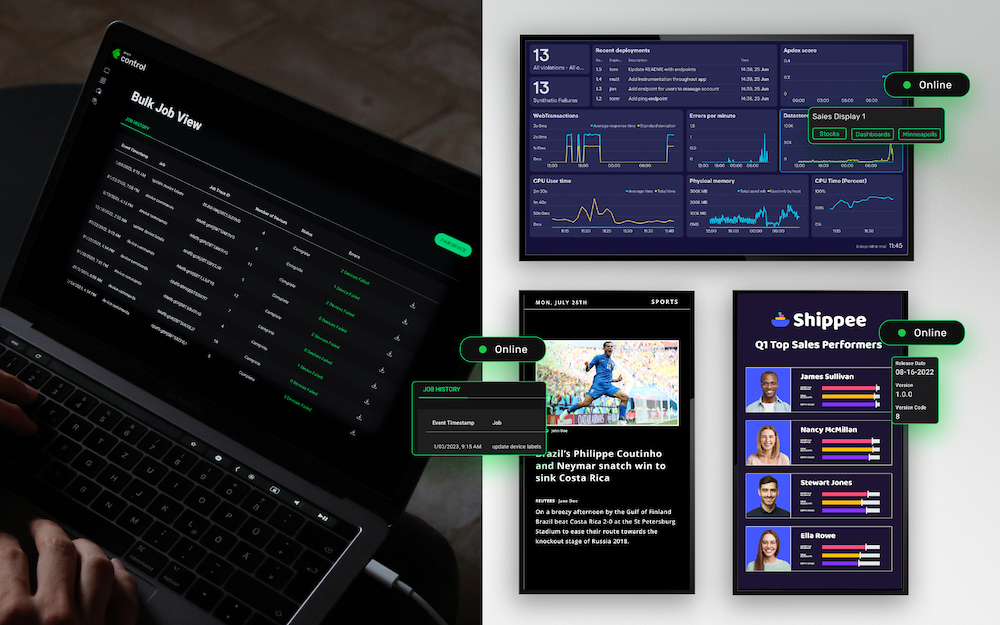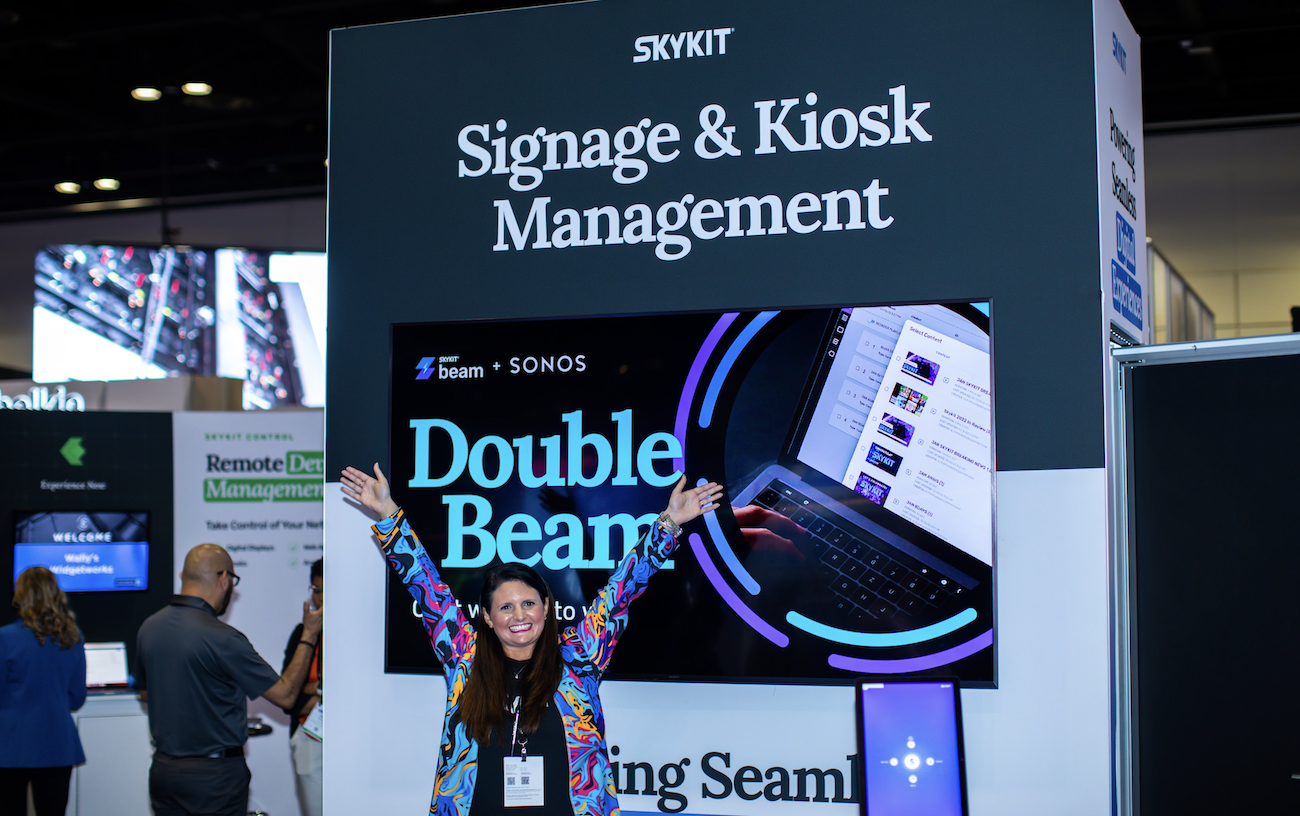Kiosks are fast becoming a standard feature in various businesses. We see kiosks and kiosk applications in all shapes and sizes, from the restaurant industry to the retail industry and everything in between.
Kiosks are usually strong and sturdy, build to withstand frequent usage from thousands of hands, although turning a tablet or iPhone into a kiosk isn’t unusual.
They’re created specifically for remote use, and are most often found in places like restaurants, banks, and airports.
Each and every one is unique, thanks to the applications that make up part of their anatomy that is.
With so many custom kiosk applications available, creating an engaging digital environment that showcases your company, increases customer interaction, and improves your ROI is a breeze.
Briefly, there are three kinds of software needed to make your kiosk come alive:
a) Operating System Software – Much like your computer, your kiosk needs an operating system that will recognize any installed hardware and run that hardware successfully with your application software.
b) Application Software – This is what we’re touching on here. This software is what customizes your kiosk. For example, the software a theater would use to show available movies and sell tickets wouldn’t be the same software a restaurant would use to customize sandwiches and meals.
c) Kiosk Management Software – This software manages security and other security-related tasks.
Now that we’re square on what is what, let’s dive into a few reasons why you should consider custom kiosk applications as you prepare to launch your kiosk campaign.
1. They Increase Engagement
The name of the game with any truly powerful digital campaign is engagement. If you can keep customers engaged and entertained for more than a minute, you’re on the right track.
In a 2013 report, The National Center for Biotechnology Information, it was said that the average attention span of a viewer was 9 seconds. NINE SECONDS. That’s one second less than the attention span of a goldfish.
If you want to avoid potential customers from turning into goldfish and swimming away, your application should provide the end user with a memorable customized experience.
Some businesses choose to use the software to lock down a specific web page that will act as their content. If you don’t want this, you can choose an application that controls other pieces of hardware within your kiosk, like a printer or a camera, creating an even more customized experience.
Take the Orbit 4D Camera Kiosk, for example. Using a special scanner, users can create unique video portraits that can be shared immediately via text, e-mail, or social media. The software for this kiosk is designed specifically to deliver these kinds of results. Without it, it might only deliver mediocre video.
We can get mediocre video on our cell phones.
By finding and implementing the right software, the Orbit 4D Camera Kiosk creates greater engagement and gets rid of all the goldfish. (Nine-second rule, remember?)
Here’s another example of hardware used in kiosks:
Have you ever been to a store where you needed to access a gift registry? Somebody, somewhere is having a party. Or a baby. Or a party for a baby. You’ve been invited. You’ve also been directed to a gift registry and need to print the list out so you can do this gift thing right.
Once you locate the kiosk in the store, you enter the name of the Birthday Baby, locate the registry, and hit a big red button that says PRINT.
Without the right application, that kiosk wouldn’t print a thing. This means you would be forced to remember 15 different gift options as you meander up and down each aisle. Now, I don’t know about you, but I have no desire to try and remember all that.
Implementing software and hardware that work well together to create a customizable experience will bring customers back to use the interactive kiosk again and again
2. They Offer Self-Service Tools
Kiosks solve problems. That’s what they do. By giving users access to self-service tools that move them faster to the solution, more customers can be served, both at the checkout counter and at the kiosk.
According to Ryan Buell, an assistant professor at Harvard Business School, self-service technologies can dramatically change what people do and how they act.
What does he mean? Turns out when customers use self-service kiosks, they actually spend more money.
The proof is in the pudding. Or the taco.
Taco Bell reported that the implementation of self-service applications increased their sales by 20%. A large portion of the increase is attributed to additional add-ons like sour cream and nacho cheese, each of which costs anywhere between 30¢ and 70¢.
The app’s biggest advantage is that it unlocks the entire menu, offering add-ons and lesser-known items and sides that may get lost on menu boards.
Another really great example comes from a study conducted by three different schools, including the National University of Singapore. The study shared that when a particular liquor store changed its point of sale from an actual employee to a kiosk, sales of hard-to-pronounce items increased by 8.4%.
Now you can safely go into a liquor store to buy Frangelico and Cognac and not turn three shades of red because you can’t pronounce it.
Based on these statistics, it’s clear that self-service tools are aiding businesses in ways they never could have imagined.
3. They Improve ROI
Based on the two examples above, we can see that the Return on Investment (ROI) with these applications isn’t minimal. Far from it.
But wait, there’s more…
Because kiosks eliminate the need to have an employee or two on hand, labor costs and overhead are drastically reduced.
Business owners can increase their ROI by implementing loyalty programs or online gift registries, too. The more you give them a reason to come back, the more they’ll come back.
Consider how self-service kiosks come in handy during the holidays. As the clock ticks and December 24th approaches, many of us are still out there, fighting the crowds, suffering the lines, and chasing the sales to give our families the very best holiday ever.
Kiosks in big box stores see a huge ROI this time of year, mostly because of the ticking clock. Time is running out. We need more decorations, more gifts, more food and drink. And waiting in those long lines isn’t an option we care to consider.
While these self-service machines don’t take lines away altogether, they certainly do shorten them. And that’s nice.
With options like quick cash back, coupon redemption, and bill pay, customers not only spend money, they take care of business while you save in your business. Often, the return on investment is brought full circle during a single season.
That’s something to go caroling about.
Kiosks have been around for almost two decades now, but guess what? They’re being deployed from warehouses faster than ever. In 2012, 27,000 self-checkout terminals were shipped to businesses around the world. That number is estimated to double by 2018, reaching a whopping 60,000.
This statistic alone proves that self-service kiosks are increasing the bottom line for businesses everywhere.
4. They Create Opportunity
In 2011, New York City decided to launch a pilot project called On The Go! that would include travel station kiosks at various points throughout the mass transit system (MTA). The interactive touch-screens would offer trip planning information, maps, and system status reports at hot spots like Penn Station and the Grand Central Terminal.
They would also offer weather information, an option many travelers appreciate.
The kiosks were a raging success. Because the 2011 launch was so effective, the MTA (Mass Transit Authority) partnered with third party developers to add roughly 77 more kiosks that would include applications offering new information, like local history and area shopping and dining options.
Per MTA’s March 2013 press release:
“As part of this proof of concept phase of the pilot, the licensees will have the creative freedom to design the customer interface and to customize the transit-related applications that will reside on the kiosks, while also selling and displaying advertising to defray the related capital and operating expenses.”
Because users gave such positive customer feedback on the initial installation of the travel kiosks, it was easy for the MTA to determine what else users needed. In was in this feedback where they found opportunity. And now they’re banking on it.
Businesses and organizations that choose to advertise on these kiosks are also being given opportunity because they can share their product or service with travelers. Billions of them.
Via the advertising opportunity, their business becomes more visible. And because the MTA sees upwards of 2.73 billion people a year, advertisers are tapping into a powerful piece of machinery that can help their business grow exponentially.
Conclusion
When finding and implementing an application, it’s crucial we think about the end user and what will make the experience most enjoyable for them. With more and more businesses implementing kiosks into their business model, it’s evident those businesses are creating success stories worth learning about.
We often fear the upfront cost of digital marketing. But learning about how others gauge their ROI can help us understand our own.
Remember this: In 2012, 27,000 new kiosks were shipped to business. That number is estimated to double by 2018. The only question that remains is, will your next marketing kiosk be on one of those trucks?
In your experience, what kiosks have you used that fascinate you? How can you take that experience and make one of your own?



